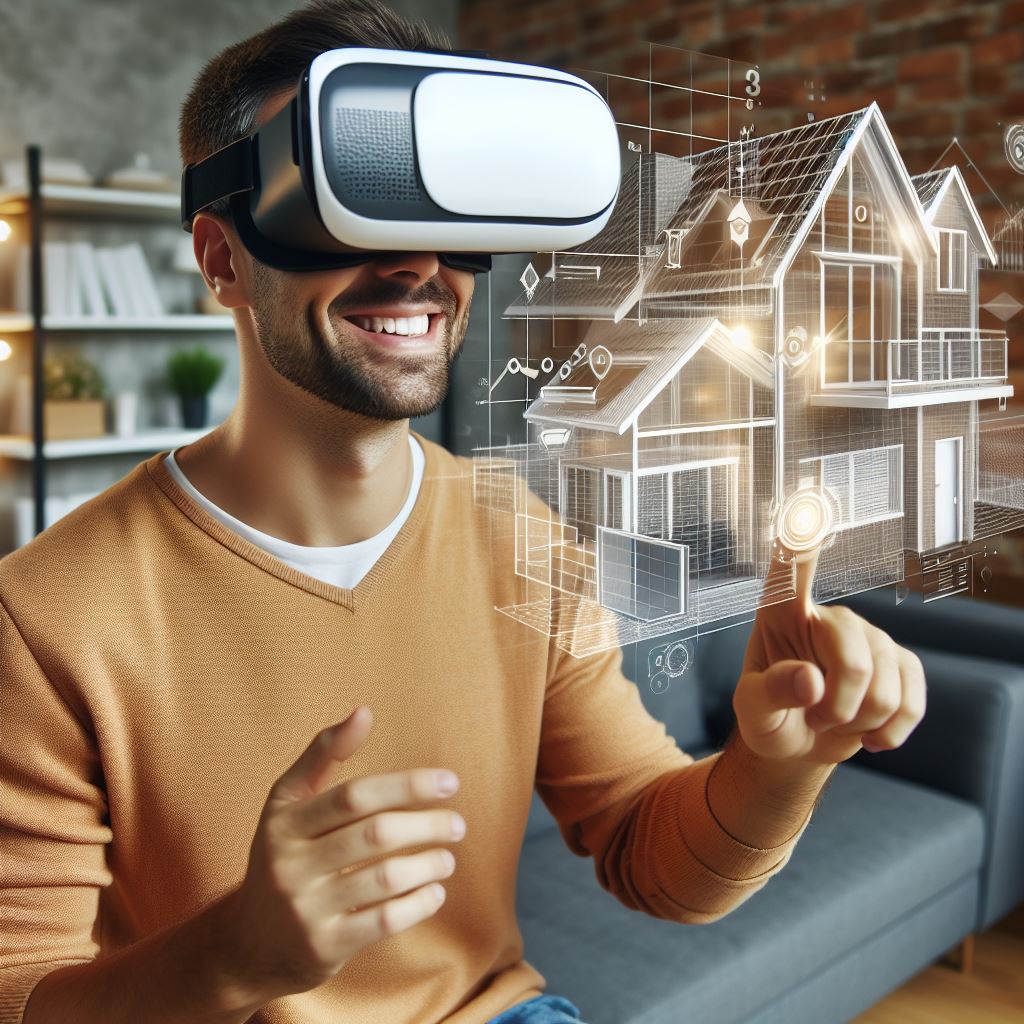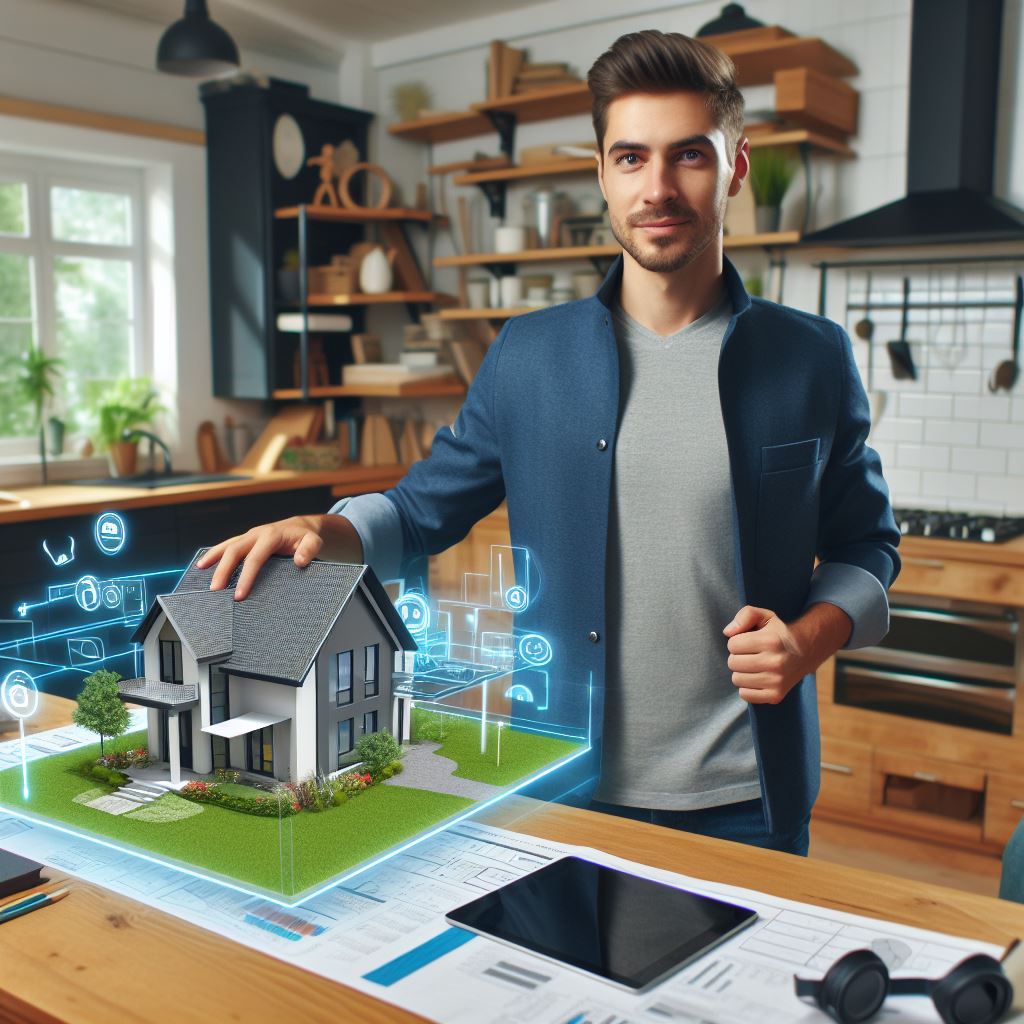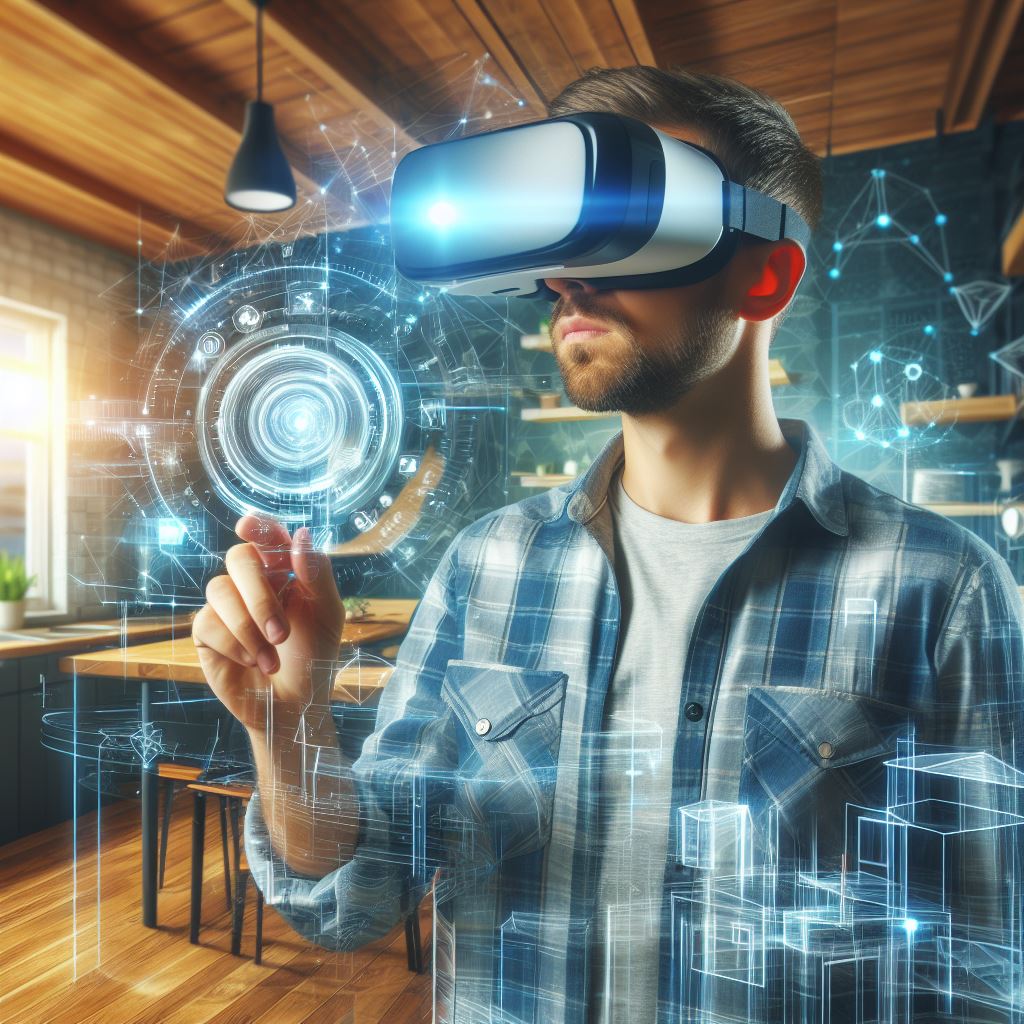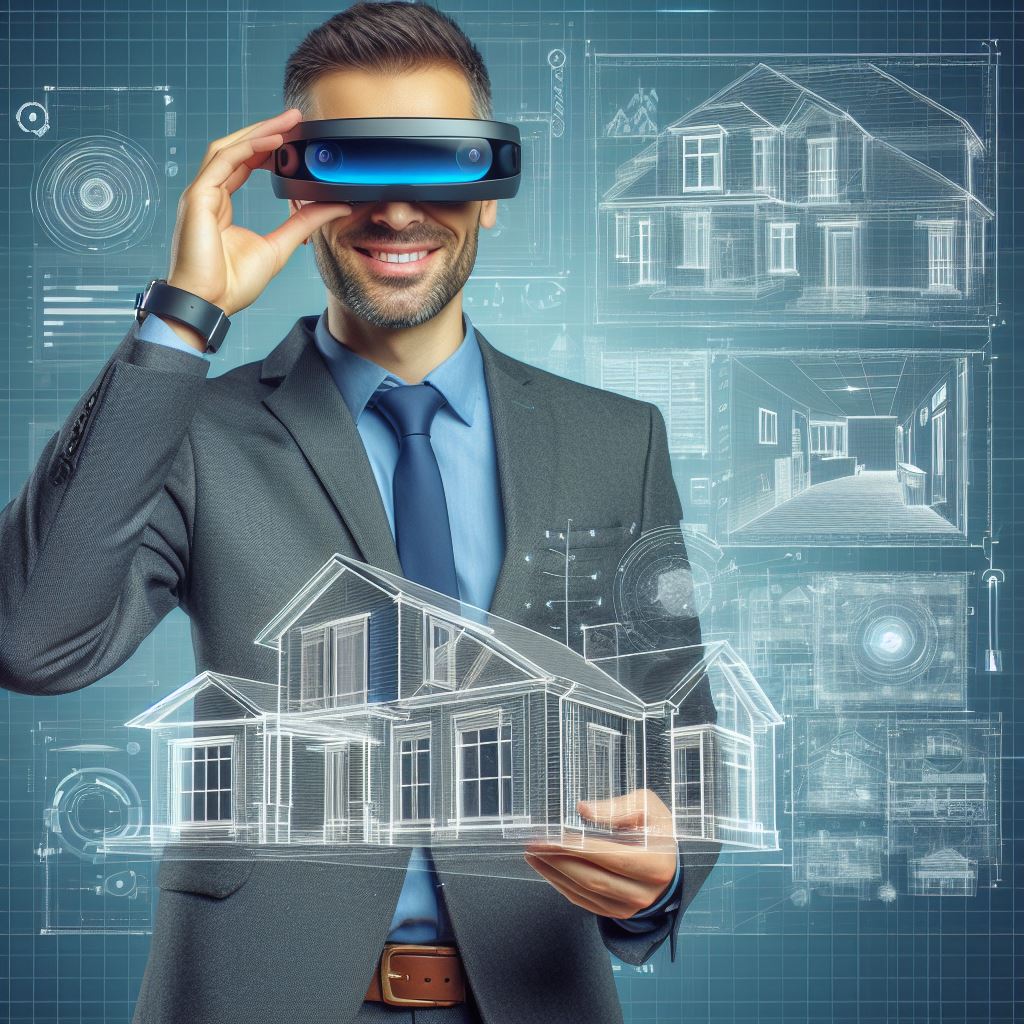Introduction
Virtual reality (VR) technology has become increasingly popular and important in various industries.
The real estate industry, in particular, has seen significant advancements and changes due to the adoption of VR.
This post will discuss the revolutionizing impact of VR tours on the way home showings are conducted.
Virtual reality technology has gained immense popularity in recent years, with its ability to create immersive and realistic experiences.
It allows users to virtually visit different locations without physically being there. This has revolutionized many sectors, including the real estate industry.
The real estate industry relies heavily on visual representation to attract potential buyers. Traditionally, buyers have relied on photographs and videos to get a glimpse of a property.
However, this limited perspective often fails to provide a comprehensive understanding of the space.
VR tours offer a solution to this problem by providing an interactive and immersive experience.
With VR headsets, potential buyers can explore every corner of a property as if they were physically present.
They can walk through rooms, inspect details, and get a real sense of the space.
This technology has completely transformed the way home showings are conducted.
Buyers no longer need to schedule physical visits to multiple properties.
They can now explore and narrow down their options from the comfort of their own homes.
This saves time, effort, and resources for both buyers and real estate agents.
In fact, VR tours have revolutionized the real estate industry by providing a more immersive and convenient way to conduct home showings.
Transform Your Real Estate Decisions
Unlock personalized real estate insights crafted just for you. Get actionable advice designed to amplify your success.
Get StartedThis technology has become an essential tool for real estate agents and buyers alike. With its increasing popularity, VR is undoubtedly the future of home showings.
Definition and Explanation of VR Tours
Definition of VR Tours
VR tours, also known as virtual reality tours, are immersive and interactive experiences that allow users to explore a digital representation of a real estate property.
How VR Technology is Used in Real Estate
VR technology in real estate involves creating virtual environments that can be accessed through devices like VR headsets or even smartphones.
These virtual environments replicate the property and its surroundings, giving potential buyers a realistic experience.
Advantages of Using VR Tours for Home Showings
Accessibility for Remote Buyers
VR tours eliminate the need for remote buyers to physically visit a property, allowing them to explore it from anywhere in the world.
This accessibility expands the potential market for sellers.
Saving Time and Effort for Buyers and Sellers
VR tours save time and effort by eliminating the need for physical home showings.
Buyers can virtually visit multiple properties without the hassle of travel, while sellers can showcase their homes to a wider audience.
Enhanced Visual and Immersive Experience for Potential Buyers
VR tours provide potential buyers with a highly immersive experience, allowing them to feel as if they are actually walking through the property.
This enhances their ability to visualize the space and make informed decisions.
Using VR technology, potential buyers can explore different rooms, observe the interior design, and even get a feel for the property’s flow.
They can “walk” from the living room to the bedrooms, inspect the kitchen, and admire the view from various perspectives.
In fact, VR tours are revolutionizing the way homes are shown to potential buyers in the real estate market.
The technology provides accessibility, saves time and effort, and enhances the visual and immersive experience for buyers.
Showcase Your Real Estate Business
Publish your company profile on our blog for just $200. Gain instant exposure and connect with a dedicated audience of real estate professionals and enthusiasts.
Publish Your ProfileIts benefits extend to sellers as well, offering increased exposure and efficiency. As VR technology continues to evolve, it is undoubtedly shaping the future of home showings.
Read: Tech in Commercial Real Estate Growth
Benefits of VR tours for buyers
Exploration of properties without being physically present
Traditionally, potential home buyers had to visit multiple properties to get a sense of their features and layout.
However, with VR tours, buyers can explore properties in detail without stepping out of their homes.
The immersive nature of VR allows buyers to virtually walk through each room, inspecting every nook and corner.
This saves time and effort, especially for buyers in remote locations or those with busy schedules.
Personalized and convenient viewing experience
VR tours offer a personalized experience by allowing buyers to navigate through properties at their own pace and in the order they prefer.
This level of control enhances the viewing experience and ensures that buyers don’t miss any important details.
Additionally, VR tours can be accessed at any time, eliminating the constraints of traditional open house timings.
Buyers can view properties at their convenience, increasing flexibility in their search process.
Increased transparency in property listings
With VR tours, sellers can showcase their properties in a more transparent manner.
Buyers can virtually explore every space, helping them get an accurate understanding of the property’s condition and layout.
This transparency reduces the chances of misleading or exaggerated property listings and ensures that buyers have realistic expectations before scheduling a physical visit.
It also helps in building trust between buyers and sellers.
Facilitates comparison and decision-making process for buyers
Comparing different properties is a crucial step in the home buying process.
VR tours simplify this task by enabling buyers to virtually visit multiple properties one after another.
By experiencing properties in VR, buyers can easily compare features, layouts, and designs, making it easier to shortlist their preferred choices.
This streamlines the decision-making process and saves buyers from unnecessary visits to properties that may not meet their needs.
Therefore, VR tours offer numerous benefits to buyers in the home buying process.
From detailed exploration without physical presence to personalized viewing experiences, increased transparency, and facilitation of the decision-making process, VR is revolutionizing how buyers interact with property listings.
As technology continues to advance, VR tours are likely to become an integral part of the real estate industry, providing an immersive and efficient way for buyers to find their dream homes.
Read: Green Tech in Sustainable Real Estate

Benefits of VR tours for sellers and real estate agents
Widening the reach to global buyers
Virtual reality tours have the ability to showcase properties to potential buyers from around the world.
Buyers no longer have to physically visit the property, which means sellers can attract a larger pool of buyers.
This is particularly beneficial for international clients who may find it difficult or time-consuming to travel for home showings.
With VR tours, sellers can easily market their properties to a global audience without any geographical limitations.
Higher engagement and reduced no-shows
Virtual reality offers an immersive experience that can captivate potential buyers like never before.
Buyers can explore every nook and cranny of the property from the comfort of their own homes.
This increased engagement translates to a higher likelihood of serious inquiries and a reduced number of no-shows during physical showings.
Virtual reality tours allow buyers to get a comprehensive view of the property before deciding to visit in person.
Showcase Your Real Estate Business
Publish your company profile on our blog for just $200. Gain instant exposure and connect with a dedicated audience of real estate professionals and enthusiasts.
Publish Your ProfileCost-effective alternative for physical staging
Traditional home staging can be expensive and time-consuming for sellers and real estate agents.
Virtual reality tours provide a cost-effective alternative to physical staging.
Sellers no longer need to invest in furniture, decor, and professional staging services.
Virtual reality enables potential buyers to visualize the property’s potential without the hassle and cost of physical staging.
Faster property sales and increased conversion rates
By utilizing VR tours, real estate agents can significantly speed up the property sales process.
Buyers who have already explored the property through a virtual tour are more likely to be serious and motivated.
Real estate agents can focus their efforts on qualified leads, resulting in faster sales and increased conversion rates.
Virtual reality tours can help agents prioritize their time and resources on potential buyers who are more likely to make an offer.
To conclude, virtual reality tours offer numerous benefits for both sellers and real estate agents.
They widen the reach to global buyers, increase engagement, reduce no-shows, and provide a cost-effective alternative to physical staging.
Furthermore, VR tours can accelerate property sales and improve conversion rates by focusing on qualified leads.
As technology continues to advance, virtual reality tours are poised to become the future of home showings.
Read: Tech-Driven Property Management Tools
Challenges and limitations of VR tours
Virtual Reality (VR) tours have undoubtedly revolutionized the way we experience home showings, offering a glimpse into the future of real estate.
However, like any technology, VR tours come with their own set of challenges and limitations.
Technical Requirements and Cost Considerations
One of the primary hurdles in widespread adoption of VR tours is the associated technical requirements and costs.
Not all potential buyers may have access to VR devices, and ensuring that a property is compatible with various VR platforms can be demanding.
Additionally, the initial investment in creating high-quality VR content, including 3D modeling and interactive features, can be substantial.
This presents a barrier for smaller real estate agencies or sellers on a tight budget.
Potential Limitations in Replicating the True Feel and Ambiance of a Property
While VR tours offer an immersive experience, they may struggle to capture the true feel and ambiance of a property.
Factors such as lighting, acoustics, and even smells contribute significantly to the overall atmosphere of a home.
VR technology, despite its advancements, may not fully replicate these sensory elements, potentially leading to a disconnect between the virtual tour and the actual experience of being in the property.
Moreover, the limitations of current VR technology may affect the representation of spaces accurately.
Small details, textures, or the ‘flow’ of a home might be lost in translation, impacting a buyer’s ability to make informed decisions based on the virtual tour alone.
Lack of Personal Interaction and Expertise of Real Estate Agents
One irreplaceable aspect of traditional home showings is the personal interaction with real estate agents.
VR tours lack the human touch and expertise that an experienced agent provides.
Buyers may have questions or specific requirements that a virtual tour cannot address.
The absence of a knowledgeable guide during the virtual experience might leave potential buyers feeling isolated and uninformed.
Essentially, while VR tours offer an exciting glimpse into the future of home showings, addressing these challenges is crucial for their widespread success.
Overcoming technical barriers, enhancing the immersive experience, and finding ways to integrate the expertise of real estate professionals will play pivotal roles in shaping the future landscape of virtual property exploration.
Showcase Your Real Estate Business
Publish your company profile on our blog for just $200. Gain instant exposure and connect with a dedicated audience of real estate professionals and enthusiasts.
Publish Your ProfileRead: E-Signatures & Online Notaries in RE
Future trends and developments in VR tours for home showings
As the real estate landscape continues to evolve, the integration of Virtual Reality (VR) tours is reshaping the way we explore and experience homes.
Looking ahead, several key trends are set to redefine the future of home showings through VR technology.
Integration of Augmented Reality (AR) in Virtual Tours
The marriage of Virtual Reality and Augmented Reality is poised to revolutionize home showings.
AR overlays digital information onto the physical world, enhancing the user’s perception of reality.
Imagine touring a property where, with a simple gesture, you can access real-time data about the neighborhood, nearby schools, or even visualize potential renovations.
The integration of AR in VR tours will provide users with a more comprehensive and interactive experience, making property exploration not just immersive but also informative.
Advancements in VR Technology for Enhanced Sensory Experiences
Future developments in VR technology are set to elevate sensory experiences during virtual home tours.
From lifelike textures to realistic ambient sounds, advancements in VR hardware and software will create an unparalleled sense of presence.
Users will feel the warmth of sunlight streaming through windows or the creak of wooden floorboards beneath their feet.
These enhancements will not only make virtual tours more engaging but also bridge the sensory gap between the digital and physical worlds, bringing us closer to the reality of being inside a home.
Increased Adoption by Real Estate Professionals and Buyers
The future holds a promising surge in the adoption of VR tours by both real estate professionals and prospective buyers.
As the technology becomes more accessible and user-friendly, real estate agents are incorporating VR tours into their marketing strategies.
Buyers, too, are recognizing the convenience of virtually exploring multiple properties without the need for physical visits.
This increased acceptance is set to make VR home showings a standard practice in the industry, offering a time-efficient and cost-effective alternative to traditional showings.
Ultimately, the future of home showings lies at the intersection of Virtual Reality and Augmented Reality, with advancements in technology promising enhanced sensory experiences.
The growing acceptance of VR tours by real estate professionals and buyers alike indicates a transformative shift in the way we buy and sell homes.
Brace yourself for a future where exploring your dream home is as simple as putting on a VR headset.
Conclusion
After exploring the benefits and potential of VR tours for home showings, it is clear that this technology has the power to revolutionize the real estate industry.
Through VR tours, buyers can easily explore multiple properties from the comfort of their own homes, saving time and energy.
The immersive experience allows them to get a realistic sense of the property, helping them make informed decisions.
As VR technology becomes more accessible and advanced, it is gaining increasing importance in the real estate industry.
With the ability to virtually visit properties, buyers can widen their search and consider homes from different locations, opening up new possibilities.
Additionally, VR tours can help agents showcase properties to a larger audience, reaching potential buyers who may not have been able to visit in person.
In order to stay competitive in the evolving real estate market, it is crucial for buyers, sellers, and agents to embrace VR tours for enhanced home showings.
Buyers can take advantage of the convenience and flexibility offered by virtual tours to make better-informed decisions.
Sellers can attract more potential buyers and stand out from the competition by offering VR tours.
Agents can leverage VR technology to expand their reach and provide a more comprehensive service to their clients.
In the end, VR tours have the potential to significantly improve the home showing experience for all parties involved.
By embracing this technology, the real estate industry can adapt to modern demands and provide a more efficient and immersive way of exploring properties.
Showcase Your Real Estate Business
Publish your company profile on our blog for just $200. Gain instant exposure and connect with a dedicated audience of real estate professionals and enthusiasts.
Publish Your Profile



